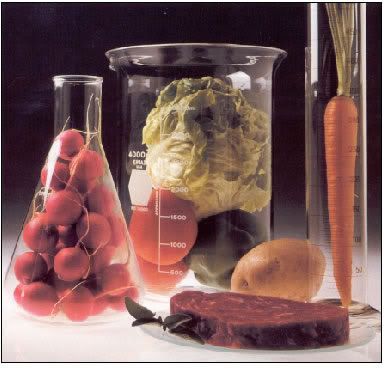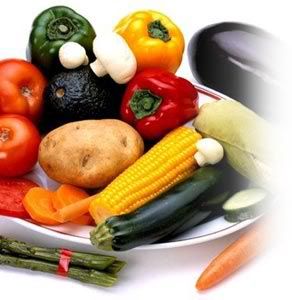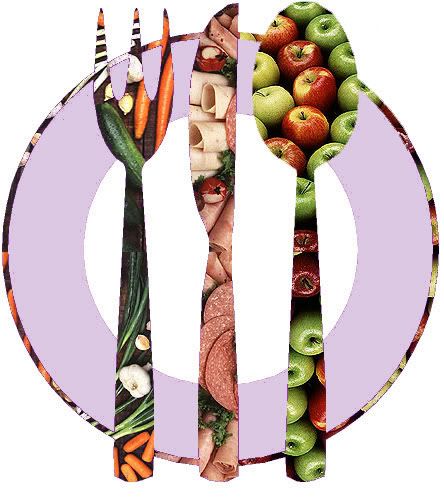ß-Carotene–rich orange-fleshed sweet potato improves the vitamin A status of primary school children.
Vitamin A deficiency is of public health significance in the developing world. Globally, 140 million children aged less than 5 y, of whom nearly 100 million live in South Asia or sub-Saharan Africa, have low serum retinol concentrations. Countries of eastern and southern Africa have the highest prevalence (37%) of preschool children with low serum retinol concentrations, followed by South Asia (35%) and Western and Central Africa (33%). In South Africa, 1 in 3 preschool children has a serum retinol concentration less than 0.7 µmol/L, and 55–68% of children aged 1–9 y consume less than 50% of the recommended dietary intake of vitamin A (700 µg retinol equivalents); children living in rural areas are the most affected.
Vitamin A deficiency is caused by a habitual diet that provides too little bioavailable vitamin A to meet physiologic needs. Rapid growth and frequent infections, which cause ineffective utilization of the vitamin, are also critical factors. The dietary sources of vitamin A are preformed vitamin A (commonly found in foods of animal origin) and provitamin A carotenoids (found in yellow and orange-fleshed fruit and vegetables and in dark-green leafy vegetables). Of the 600 carotenoids found in nature, only 3 are important precursors of vitamin A in humans, namely, ß-carotene, -carotene, and ß-cryptoxanthin. ß-Carotene is the major provitamin A component of most carotenoid-containing foods.
Strategies to control vitamin A deficiency include dietary diversification, food fortification, and vitamin A supplementation. Dietary diversification includes the production of ß-carotene–rich crops, such as orange-fleshed sweet potato (OFSP). The consumption of OFSP increased the vitamin A intake of Kenyan women and children. A recent ex ante impact assessment indicated that OFSP could make a major contribution to controlling vitamin A malnutrition in sub-Saharan Africa. Replacing white-fleshed varieties with high ß-carotene varieties that meet local preferences could benefit an estimated 50 million children aged less than 6 y who are currently at risk of diseases associated with vitamin A deficiency. The consumption of diets containing mostly plant sources of ß-carotene, the primary source being red sweet potato, increased serum retinol concentrations in Indonesian children marginally deficient in vitamin A.
Under the International Potato Center’s Vitamin A for Africa partnership, ß-carotene–rich OFSP varieties are widely promoted. It is important to determine the efficacy of ß-carotene–rich OFSP in improving vitamin A status in children. Because of its agronomic, technologic, and acceptability performance, the naturally high ß-carotene–containing Resisto variety of sweet potato, which has a dark orange root, was chosen for the present study. This variety was originally developed in the United States through conventional breeding and was successfully introduced into a home-gardening project in South Africa after being judged by members of the community to be tastier than the other varieties tested.
DISCUSSION
This randomized controlled study showed that feeding ß-carotene-rich OFSP of the Resisto variety in a primary school feeding program in a rural community improved vitamin A liver stores as measured with the modified-relative-dose-response (MRDR) test.
The MRDR test takes advantage of the vitamin A deficiency-dependent accumulation of apo-retinol binding protein (apo-RBP) in the liver and is a better discriminator of intervention effects on vitamin A status than is serum retinol concentrations alone. The DR:R, which is not affected by subclinical infection, showed an intervention effect, which indicated that ß-carotene-rich OFSP improved vitamin A liver stores. The increase in the serum DR dose response in the control group indicated that apo-RBP accumulated in the liver as a result of inadequate endogenous liver retinol concentrations.
The MRDR test is more responsive to vitamin A intervention than are serum retinol concentrations when the supply of vitamin A is large enough to change overall vitamin A status. Serum retinol concentrations reflect recent vitamin A intakes. For the MRDR test to work correctly, ie, for it to pick up differences in vitamin A liver reserves, a washout period of 10 d is allowed before the postintervention MRDR test is conducted. The washout period allows for the re-accumulation of apo-RBP in the hepatocytes of children who may not have changed to a normal vitamin A status during intervention with OFSP. This washout period may explain the lack of an intervention effect on serum retinol concentrations observed in this study because the dietary component of the serum retinol concentration would have been removed for 10 d before resampling.
In another study done in South Africa, a biscuit fortified with ß-carotene, providing 50% of the recommended dietary allowance for vitamin A for 1 y, resulted in an improvement in serum retinol concentrations in primary school children, but reverted to preintervention concentrations after a 10-wk period during which the fortified biscuits were not available.
The reason why serum retinol concentrations increased from baseline in both groups is unknown. Deworming to exclude helminthic infection as a confounder may have played a role. A study in Indonesian children showed that serum retinol concentrations markedly improved when children consuming meals containing plant sources high in ß-carotene were dewormed. Others, however, have found that deworming and supplementing children with 210 µmol vitamin A did not affect serum retinol concentrations. The increase in serum retinol concentration is dependent on the degree of intestinal helminth infection and likely on the type of parasite. The present study did not assess the prevalence or degree of helminthic infection.
A seasonal effect on serum retinol concentrations in response to dietary changes, eg, when provitamin A–rich mangoes are available as reported in rural Gambian women, cannot be excluded, although it is unlikely. The baseline survey was conducted at the end of the summer season, whereas the postintervention survey was conducted during the winter season when provitamin A-containing foods are less available. The habitual diet of the children with regard to vitamin A and provitamin A intakes during the intervention period was not controlled for. It was assumed that the habitual vitamin A intake was low, as was previously reported for rural areas in the same province.
The bioavailability and bioconversion of provitamin A carotenoids depend on both the food matrix and host-related factors. The ß-carotene in orange-fleshed vegetables, such as the OFSP, does not play a role in photosynthesis and it is located in the cell chromoplasts, where it is found in lipid droplets or bound to a protein. The ß-carotene in orange-fleshed vegetables is more readily released than that in dark-green leafy vegetables during cooking, thereby enhancing bioavailability. Between 3 g and 5 g fat per meal is required to ensure maximum carotenoid absorption. The sunflower seed oil added to the OFSP together with the fat content of the school meal provided 3 g fat.
The US Institute of Medicine recommendation that 12 µg ß-carotene is equivalent to 1 µg retinol was used in this study. Bioefficacy, however, varies depending on vitamin A status and may be higher in vitamin A–deficient populations because such people are more efficient at converting provitamin A.
The low percentage of children with inadequate vitamin A liver stores (DR:R 0.060) at baseline was a limitation of the study. A bigger response may have occurred if a larger proportion of the study population had abnormal DR:R values from the onset. This finding shows that it is important to know the vitamin A status of the population before conducting intervention trials and to not rely solely on low serum retinol concentrations. If the study outcome had only relied on serum retinol concentrations, it would not have been possible to conclude anything regarding the efficacy of sweet potato in improving vitamin A status.
ß-Carotene-rich foods are important for preventing vitamin A deficiency. A combination of orange fruit and squash was more effective in increasing serum retinol concentrations in anemic schoolchildren with marginal vitamin A status than was a combination of dark-green leafy vegetables and carrots. Consumption of meals containing ß-carotene–rich red sweet potato also increased serum retinol concentrations in marginally vitamin A–deficient children. These findings may have been related to the type of ß-carotene, because cis-isomers are less bioavailable and have less provitamin A activity than do the trans form. The provitamin A in raw and boiled OFSP of the Resisto variety is almost exclusively ß-carotene in the trans form.
OFSPs, which are naturally rich in ß-carotene, are an excellent food source of provitamin A. These varieties can make a significant contribution to a viable long-term effective and sustainable food-based approach to prevent vitamin A deficiency in developing countries. OFSP of the Resisto variety was successfully introduced into a home garden project that promoted the production and consumption of a variety of ß-carotene–rich vegetables. It was shown that serum retinol concentrations in 2–5–y-old children improved within 20 mo of implementation.
Food diversification through the production of yellow-orange ß-carotene–rich vegetables is seen as a viable long-term strategy to complement supplementation and fortification programs. High ß-carotene–containing OFSP that provided 830 RAE/100 g cooked root was shown in this study to improve vitamin A status and to have the potential to control vitamin A deficiency in developing countries.
Conclusions:
Consumption of OFSP improves vitamin A status and can play a significant role in developing countries as a viable long-term food-based strategy for controlling vitamin A deficiency in children.




1 Comments:
redirected cheap tramadol - tramadol online no prescription overnight delivery
Post a Comment
<< Home